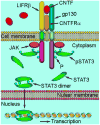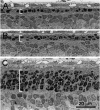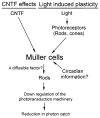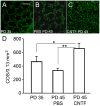CNTF and retina
- PMID: 22182585
- PMCID: PMC3288688
- DOI: 10.1016/j.preteyeres.2011.11.005
CNTF and retina
Abstract
Ciliary neurotrophic factor (CNTF) is one of the most studied neurotrophic factors for neuroprotection of the retina. A large body of evidence demonstrates that CNTF promotes rod photoreceptor survival in almost all animal models. Recent studies indicate that CNTF also promotes cone photoreceptor survival and cone outer segment regeneration in the degenerating retina and improves cone function in dogs with congenital achromotopsia. In addition, CNTF is a neuroprotective factor and an axogenesis factor for retinal ganglion cells (RGCs). This review focuses on the effects of exogenous CNTF on photoreceptors and RGCs in the mammalian retina and the potential clinical application of CNTF for retinal degenerative diseases.
Copyright © 2011 Elsevier Ltd. All rights reserved.
Figures









References
-
- Adler R. Ciliary neurotrophic factor as an injury factor. Curr Opin Neurobiol. 1993;3:785–789. - PubMed
-
- Adler R, Landa KB, Manthorpe M, Varon S. Cholinergic neuronotrophic factors: intraocular distribution of trophic activity for ciliary neurons. Science. 1979;204:1434–1436. - PubMed
-
- Barbin G, Manthorpe M, Varon S. Purification of the chick eye ciliary neuronotrophic factor. J Neurochem. 1984;43:1468–1478. - PubMed
-
- Bargoot FG, Williams TP, Beidler LM. The localization of radioactive amino acid taken up into the outer segments of frog (Rana pipiens) rods. Vision Res. 1969;9:385–391. - PubMed
Publication types
MeSH terms
Substances
Grants and funding
LinkOut - more resources
Full Text Sources
Other Literature Sources

